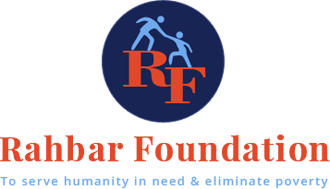Click here to see if your employer will match your donation.
Click to see if your company provides grants for volunteering.
Appeal To Support Nepal Earthquake Victims
APPEAL TO DONATE GENEROUSLY TO HELP EARTHQUAKE VICTIMS IN NEPAL
The 2015 Nepal earthquake (the Himalayan earthquake)[7][8] occurred at 11:56 NST on 25 April, killing at least 6,300 people and injured more than twice as many as of 1 May 2015,[i] with a moment magnitude (Mw) of 7.8Mw[1] or 8.1Ms[2] and a maximum Mercalli Intensity of IX (Violent). Its epicenter lay in Barpak village of Gorkha district and its hypocenterwas at a depth of approximately 15 km (9.3 mi).[1]
It was the most powerful disaster to strike Nepal since the 1934 Nepal–Bihar earthquake.[9][10][11] Some casualties have also been reported in the adjoining areas of India, China, andBangladesh.
The earthquake triggered an avalanche on Mount Everest, killing at least 19,[12] making it the deadliest day on the mountain in history.[13] It triggered another huge avalanche inLangtang valley, where 250 are now missing.[14] Centuries-old buildings were destroyed at UNESCO World Heritage sites in the Kathmandu Valley, including some at the Kathmandu Durbar Square, the Patan Durbar Square and the Bhaktapur Durbar Square. Nepal's government has declared three days of mourning after the quake.[15]
Geophysicists and other experts had warned for decades that Nepal was vulnerable to a deadly earthquake, particularly because of its geology, urbanization, and architecture.[16][17]
Continued aftershocks occurred throughout Nepal, with one shock reaching a magnitude of 6.7 on 26 April at 12:54:08 NST.[4] The country is at continued risk of landslides as well.[18]
Earthquake
The earthquake occurred on 25 April 2015 at 11:56 a.m. NST (06:11:26 UTC) at a depth of approximately 15 km (9.3 mi) (which is considered shallow and therefore more damaging than quakes that originate deeper in the ground),[19] with its epicenter approximately 34 km (21 mi) east-southeast of Lamjung, Nepal, lasting approximately twenty seconds.[20] The earthquake was initially reported as 7.5 Mw by the United States Geological Survey (USGS) before it was quickly upgraded to 7.9 Mw and finally downgraded to 7.8 Mw. The China Earthquake Networks Center (CENC) reported the earthquake's magnitude to be 8.1 Ms. The India Meteorological Department (IMD) said two powerful quakes were registered in Nepal at 06:11 UTC and 06:45 UTC. The first quake measured 7.9 Mw and its epicenter was identified at a distance of 80 km to the northwest of Kathmandu, the capital of Nepal. Bharatpur was the nearest major city to the main earthquake, 53 km (33 mi) from the epicenter. The second earthquake was somewhat less powerful at 6.6 Mw. It occurred 65 km (40 mi) east of Kathmandu and its seismic focus lay at a depth of 10 km (6.2 mi) below the earth's surface. Over thirty-five aftershocks of magnitude 4.5 Mwor greater occurred in the day following the initial earthquake, including the one of magnitude 6.6 Mw.[21]
According to the USGS, the temblor was caused by a sudden thrust, or release of built-up stress, along the major fault line where the Indian Plate, carrying India, is slowly diving underneath the Eurasian Plate, carrying much of Europe and Asia.[19] Kathmandu, situated on a block of crust approximately 120 km (75 miles) wide and 60 km (37 miles) long, reportedly shifted 3 m (10 ft) to the south in just 30 seconds.[22]
The risk of a large earthquake was well known beforehand. In 2013, in an interview with seismologist Vinod Kumar Gaur, The Hindu quoted him as saying, "Calculations show that there is sufficient accumulated energy [in the MFT], now to produce an 8 magnitude earthquake. I cannot say when. It may not happen tomorrow, but it could possibly happen sometime this century, or wait longer to produce a much larger one."[23] According to Brian Tucker, founder of a nonprofit organisation devoted to reducing casualties from natural disasters, some government officials had expressed confidence that such an earthquake would not occur again. Tucker recounted a conversation he had had with a government official in the 1990s who said, "We don't have to worry about earthquakes anymore, because we already had an earthquake"; the previous earthquake to which he referred occurred in 1934.[24]
-
3 million people in need of food aid
-
130,000 houses destroyed
-
24,000 people living in makeshift camps
-
20 teams working to reunite lost children with their families
Casualties
- Nepal
The earthquake killed at least 6,621 and injured more than twice as many, as of 1 May 2015,[i][45] Nepal's Prime Minister, Sushil Koirala, has said[63] that the number could reach 10,000.[64] The rural death toll may have been lower than expected as villagers were outdoors working during the time the quake hit.[65] Survivors were found up to 5 days after the earthquake.[66]
On 27 April, The Himalayan Times reported that as many as 20,000 foreign nationals may have been visiting Nepal at the time of the earthquake, although reports of foreign deaths were relatively low. As reports came in from isolated villages, it was possible that total deaths would reach or exceed the more than 10,000 killed in the 1934 earthquake.[67] Hundreds of people are still considered missing and more than 450,000 are displaced.[46]
- India
As of 27 April at 4:14 p.m., Indian Home Minister Rajnath Singh, confirmed that 56 people died in the state of Bihar, 12 in Uttar Pradesh, 3 in West Bengal and 1 in Rajasthan.[68]
Reference: http://en.wikipedia.org/wiki/2015_Nepal_earthquake











